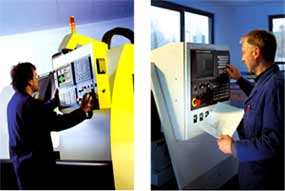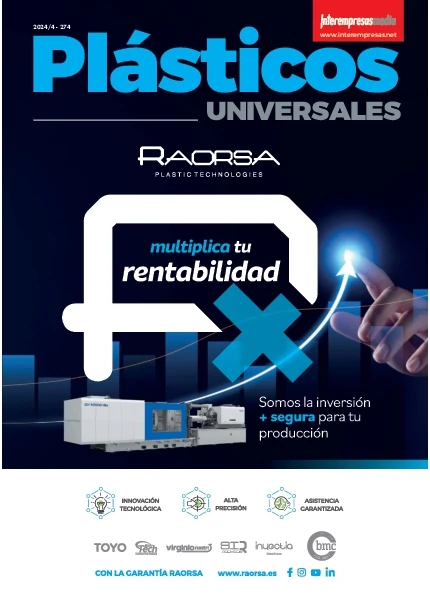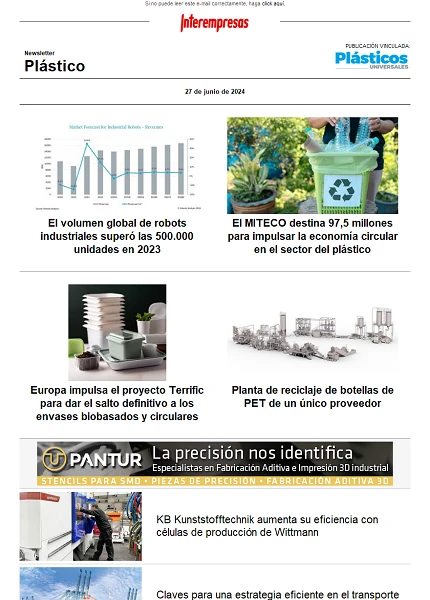This news article was originally written in Spanish. It has been automatically translated for your convenience. Reasonable efforts have been made to provide an accurate translation, however, no automated translation is perfect nor is it intended to replace a human translator. The original article in Spanish can be viewed at
Un soporte de programación óptimo para el tallerManual Guide i, GE Fanuc, optimum support
Optimum support of programming for the workshop
So far represented a sophistication in a CNC control, the choice of graphical user interface on site, has become a standard element. Even in the case of complex machining, turning and milling operations combined machines, are they programmed almost exclusively using CAM systems, is essential to have an option of manual programming in the workshop of easy to use. Manual Guide i of GE Fanuc provides users optimal support.
(izqda.) In the milling the design standardised of the interface allows to any operario experienced face up easily even to unknown technologies. (dcha.) Also in the turning, the design standardised of the interface allows to face even unknown technologies.
Manual Guide i is the new graphic operator interface for all the Series CNC Controls i model B of GE Fanuc, and makes it possible to walk from machine to machine programming of turning, milling and combined. The philosophy of Manual Guide i starts there where "workshop programming", the so-called "oriented programming workshop" ends. While the latter was designed to allow anyone could program the machine, i.e., was aimed at non-specialist workers, Manual Guide i requires a certain experience from the operator. However, the software is designed to simplify all manual activities on the screen and, for example, is no longer necessary to use DIN ISO codes.
The programming workshop Manual Guide
GE Fanuc Manual Guide to trajectory can be traced from the very outset of the programming workshop. When GE Fanuc released the programming FAPT system at the end of the 1980s, it was in fact one of the pioneers in this technology. Workshop-oriented programming experienced a great boost, and FAPT, which was available in versions for turning and milling, was swept away by this wave of success and were further developments, becoming the FAPT CAP II and Super ch.
These eased the programmer of a wide variety of tasks, since they could calculate automatically parameters of machining, such as the head speeds and speeds of advance, using the so-called Court conditions. With Super CAP, even inexperienced operators were able to reach reasonable machining results, provided that the database of the tool and the data of the material is maintained properly. It supported the creation of complex programs, even up programs of multiple channels, which were in turn used two turrets and multiple heads turning.
Parallel to these demands, a market that demanded software for Conventional lathes, which could operate without need for highly sophisticated functions was developed in the mid-1990s. It was essentially a demand for software that could support manual operations in such conventional lathes. GE Fanuc's response to these new requests from operators and manufacturers of machine tools was the Guide Manual. This software allowed the programming of linear paths, circular movements and the interpolation of axis through a manual steering wheel. He also implemented specific cycles. Manual Guide combined manual support cycles control and provided a suite of easy to use for low and middle range machines that, in contrast with the Super machining Cap, required some degree of knowledge of the programmer. It was directed to specialized operators and with experience and was designed to facilitate its tasks on the screen.
The success which went to the product on the market confirmed the thesis of GE Fanuc and this was followed in 1997 Manual Guide T for turning and milling the M Guide Manual.

(left) In the screen of the module of milling, the operator can see all the main operations of an only look: State of the machine, simulation, window of the program and the screen keys menu.
(r.) The new graphic operator interface Manual Guide i has already implemented in a wide variety of machines for turning, milling and multifunctional - in this case in a lathe.
Trend towards complex multifunctional machines
As a result of the growing demand around the possibility of making the full processing on a single machine, in recent years the market has flooded, a growing number of hybrid and multifunctional machines for combined processing. These machines support the turning and milling operations on a single machine. Normally, it's centers of milling and turning that do support drilling operations using motorized tools, but there is also an increase of centers of milling 5 axes with options of turning. Following this trend, GE Fanuc began to expand the software Manual Guide for multifunctional machine controls. The idea was to merge the versions T and M in a single software product with a philosophy of operator and screen design standard.
This version has now reached the maturity of the market with the name of "Manual Guide i" and it has already proven its suitability for practical application in a wide range of machine tools. Manual Guide i is a modular product, which consists of a basic system and different modules for turning, milling and calibration of parts. The operator interface offers the design "all on a screen". This means that the layout of the content on the screen of the Guide Manual gives an overview of all functions of the machine on a single screen.
In the top left of the screen, users have access to all positions and velocities of the axes, and can see where is currently the machine within the program and what commands are activated. Below is a window of simulation in which the trajectories of court can be displayed or a 3D graphical simulation of the piece. In addition, Manual Guide i provides an editor for easy management programs, which works as a program of processing of texts of a PC. Features cut / copy and paste, operators can move through them and make changes directly to the programs. They can also write their own programs in the editor without knowledge of G and M codes, as masks of introduction and help screens are guided through every step of the process.
Using the Manual Guide i, operators can also download programs/parts of a program of a CAD/CAM system and continue processing them. The same can occur with programs that can be downloaded from a memory card. In addition, program for frequently used functions icons can be created. Another feature of utility are the comments that can be displayed at the bottom of the screen when the mouse pointer stays on the codes G or m.
The bottom of the screen offers a bar menu icons which allow an intuitive selection of the menu items through screen keys. This prevents operators "being lost" in a maze of submenus.
Modules for turning, milling and measure
Manual Guide i basic may be extended with a variety of features. A module is available from turning that it offers the full range of cycles required to schedule a turning piece. This includes, among other things, functions, such as machining from roughing and finishing, turning internal and external, reaming, slotted and tronzado cycles, as well as drilling. The module of milling offers, among other things, all cycles of drilling available, as well as functions for milling surfaces, contours and cashiers. The modularity of the Manual Guide i mean that it is possible to load just the module of milling on a machine, milling machine and disable the other modules. If it is required that a lathe conducted a milling using motorized tools, both modules will be implemented. If necessary, the so-called module of adjustment, which is a set of cycles for measuring tools and pieces can also be used.
Standardized, flexible and reliable
One of the main advantages of Manual Guide i over its predecessors is its flexibility, the fact that the software can adapt to a wide variety of configurations of machine. Standardizes all essential functions together with a uniform screen design, so that operators of lathes do not have problems to navigate through a screen of typical milling and vice versa. In addition, GE Fanuc has managed to avoid all the uncertainties that afflict the world of the modern standard PC. Software Manual Guide i runs entirely on the hardware of the CNC, avoiding all the sensitivities that standard PC and its software are as likely.
Related Companies or Entities




































